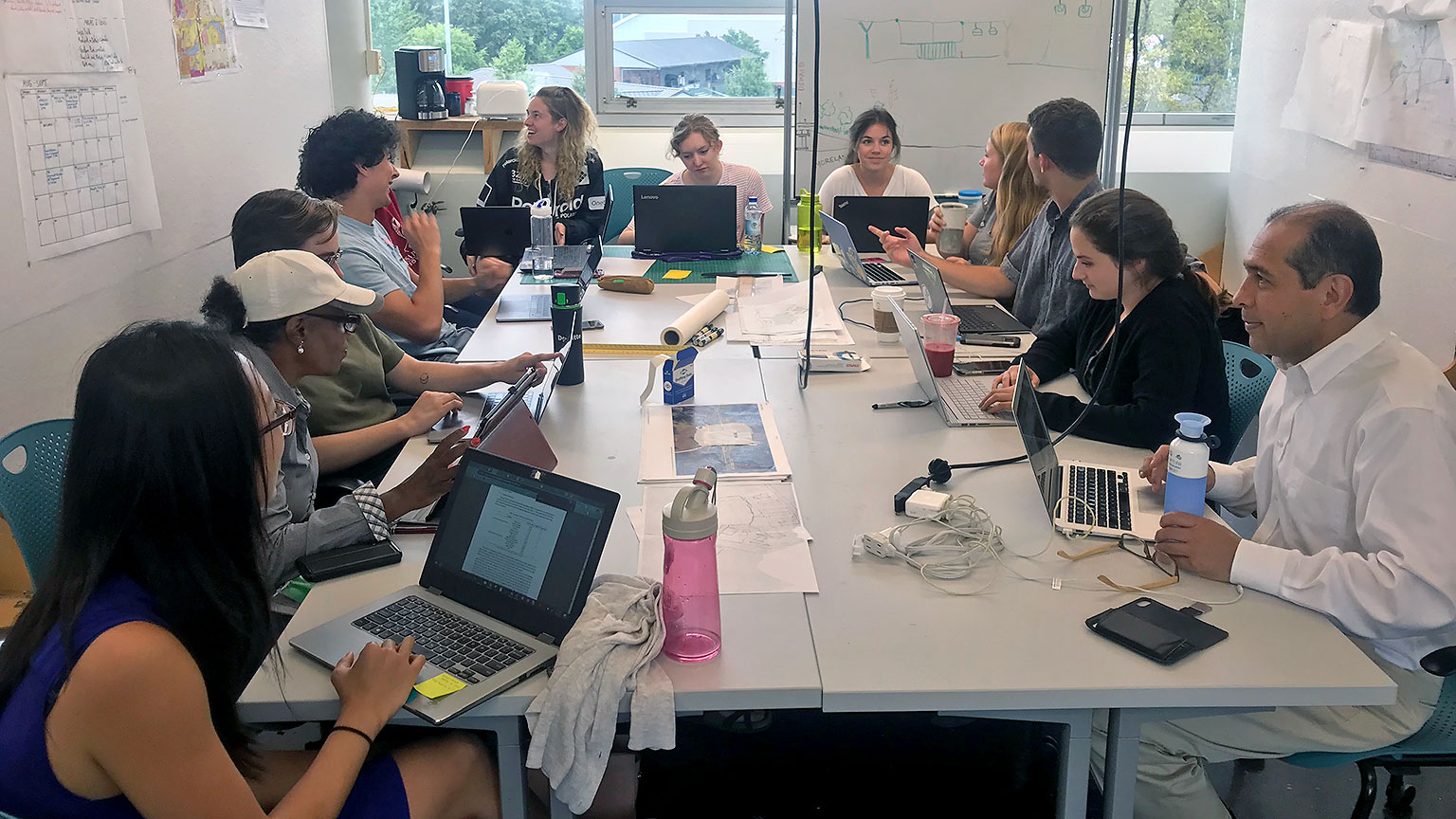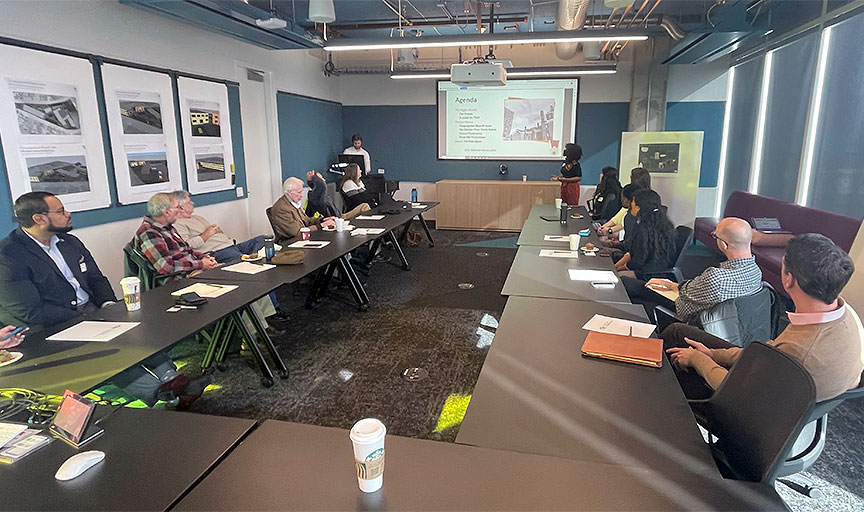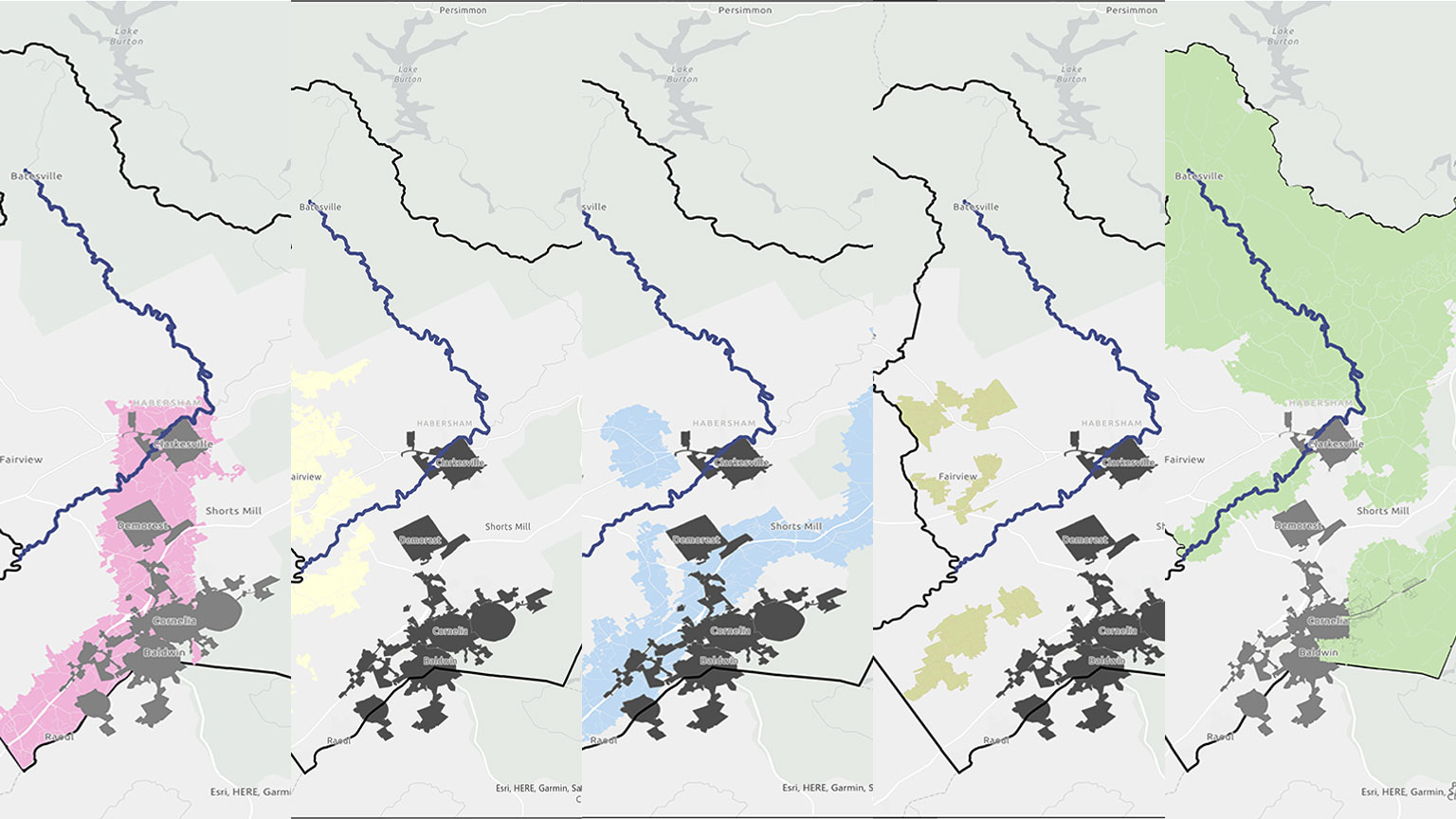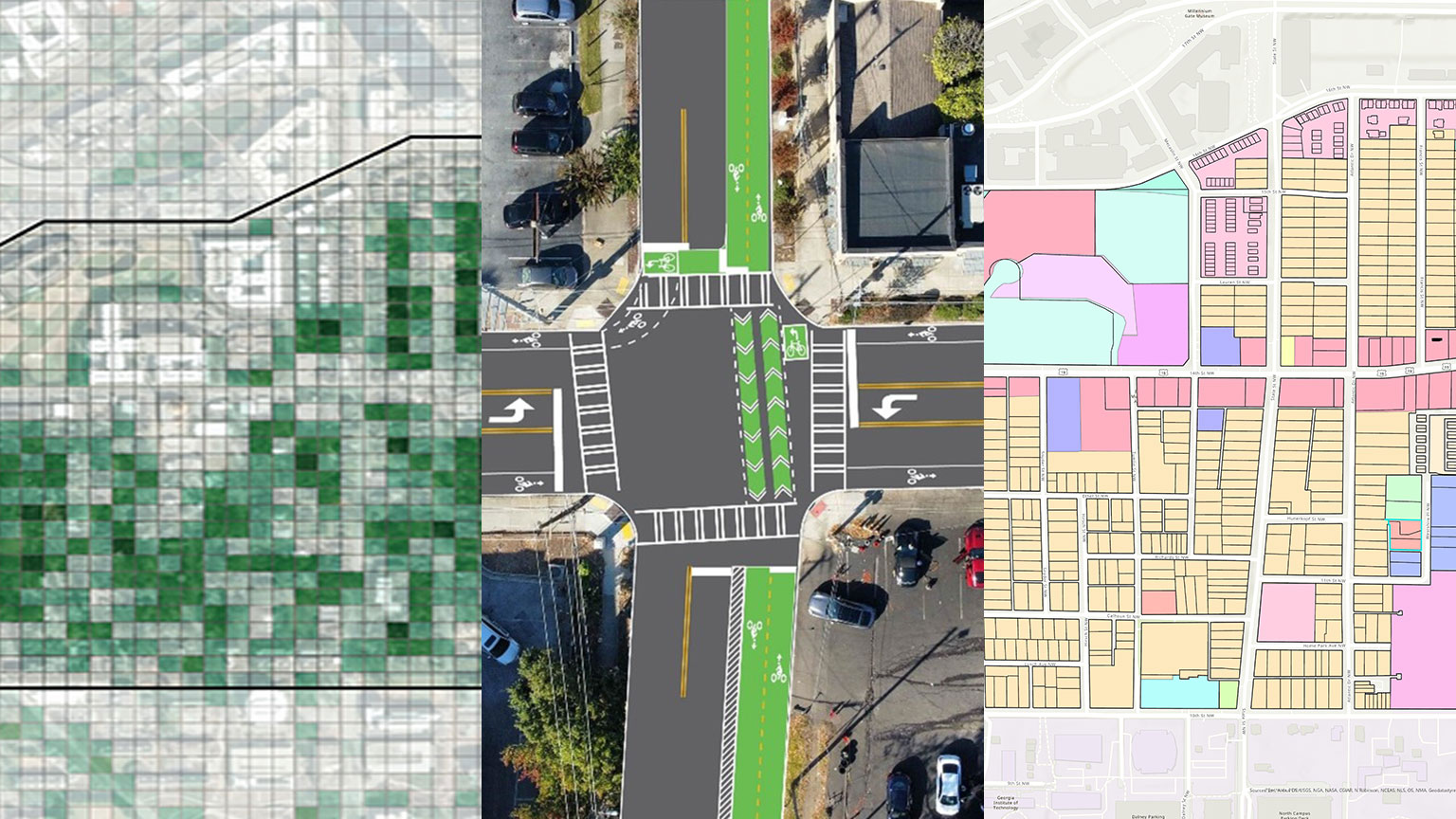Georgia Tech Planning Studios Tackle Top Urban Concerns
As the Nation’s cities watch Atlanta deal with the ups and downs of an ever-changing and industry-rich urban landscape, Georgia Tech’s School of City and Regional Planning studios serve as a barometer for the most crucial urban challenges.
The School's faculty have close ties and long-held connections to planners in the city of Atlanta and the entire South East region. Along with a 25-year connection to the Georgia Conservancy, the city's landscape is a testimony to Georgia Tech’s creativity and insight: The Atlanta Beltline, Atlantic Station, and Chattahoochee Now were all first imagined in SCaRP studios.
“We bring knowledge, creativity, and collaboration together to solve our region’s and the world’s urban planning problems. Each year we offer four to five studios where we craft processes and design places that lead to better communities,” said Gulsah Akar, chair of the School of City and Regional Planning. "Studio learning is critical in planning pedagogy. Our studios are intensive, multidisciplinary and research-oriented."
The instructors who lead our studios are just as influential: Mike Dobbins, whose studios are focused on metro-area planning, was the City Planner for Atlanta when they hosted the Olympic Games in 1996. Catherine Ross, whose guidance has long been sought by the national legislature, recently testified before the Congressional Infrastructure Committee. And Perry Yang's work with the city of Tokyo is helping lay the foundations of sustainable smart city planning.
This semester, the School’s studios tackled issues of affordable housing, smart growth, a unique urban master plan, and sustainable cities.
Sustainable Cities Studio

The Sustainable Cities Studio is the capstone course for Georgia Tech’s Sustainable Cities minor, associated with the Serve-Learn-Sustain initiative. This course provides students with a faculty-supervised community engagement experience in developing sustainability-related projects for a non-profit, business, or government agency.
Since its inception in 2018, The Sustainable Cities Studio have helped the Atlanta and Georgia Community by providing research and tools to address many of their sustainability issues. The Studio is recognized regionally, nationally, and internationally: In 2020, the Sustainable Cities Studio was recognized by the United Nations Institute for Training and Research (UNITAR) as a tool to teach young about Sustainable Development Goals (SDGs). In 2021, the Sustainable Cities Studio participated in the United Nations Habitat Conference.
This Fall's studio focused on climate vulnerabilities, such as energy, transportation, heat, floods, public health, and food deserts in Cobb County, just outside the city of Atlanta.
"Students in this studio have the opportunity to work with multidisciplinary teams and professional experts on addressing real problems experienced in the region, from climate change to economic development," said Jairo Garcia, the studio's instructor. A signature of the course is the way the students apply "a wide range of knowledge learned at Georgia Tech to solve some of the main issues that are affecting our communities in Georgia," Garcia said.
Faith Based Affordable Housing

Studio instructor Aaron Fortner said Atlanta’s affordable housing crisis is well known by now, and getting worse by the moment. The jurisdictions for Atlanta and other “hot” markets all over the country are trying to come up with strategies that might work, Fortner said.
"The work that the Georgia Tech Urban Design studio is doing for our faith-based partners is critical in identifying a way forward towards providing affordable housing solutions in response to this local and national affordability crisis," Fortner said. "The studio’s work is helping not only our locational house of faith partners, but also will be used a resource by the City of Atlanta, and hopefully the region, for enabling other houses of faith entities to pursue housing affordability.”
The context for this studio investigates affordable housing strategies that do not eliminate single-family zoning. These include coming up with the tools and resources to coordinate the use of publicly and non-profit-owned land; maximize the conservation of existing stock, and concentrate densification in already dense areas like transit corridors and existing dense areas. Specifically, the studio explores the potential for faith-based property owners to step up, using their land holdings as a way of underwriting the land cost element of an affordability-serving pro forma.
"This work is timely and our partners are very excited to move forward based on the planning work provided by Georgia Tech through this studio," Fortner said.
Habersham County Smart Growth Plan

The Georgia Conservancy has identified three north Georgia communities seeking help to balance growth with conservation. These communities welcome development--especially diverse and affordable housing choices--but want it to coincide with serious advancement in natural landscape conservation.
Stakeholders from Habersham County, the cities within the County, and key property owners within the County have requested assistance from the Georgia Conservancy and Georgia Tech to consider how and where development and conservation can and should occur across the County. Valued qualities of Habersham County that draw new residents to the area--forests, mountains, and streams--are at risk without a concerted effort to include conservation alongside land-efficient development.
“The Georgia Tech Urban Design studio partnership with the Georgia Conservancy continues this fruitful 25-plus year relationship of providing advanced planning to communities throughout the State of Georgia," Fortner said. "The studio’s work with the Habersham County leadership towards establishing the tools for rural preservation, small town growth, sustainable development practices, and regional connectivity has been enthusiastically received and is already moving forward towards next steps for implementation.”
Students in this studio work together in group settings, applying their knowledge across all of our specializations, with emphasis on environmental planning and sustainability, rural conservation, economic development, urban design, transportation planning, land use planning, and associated regulatory and resource requirements. The studio progressed from data assembly to analysis, to consideration of alternatives, to suggested courses of action, to a final report and presentation. Stakeholder organizations review each stage of the work and comprise a steering committee, engaged through individual interviews and group presentations.
Home Park Master Planning

Nestled between Georgia Tech and Atlantic Station (and between the Connector and Northside Drive), is the neighborhood of Home Park. This neighborhood has provided planning frameworks through the years, ultimately approved and incorporated into the City of Atlanta’s own plans, that aim to maintain neighborhood integrity and quality of life for its residents amidst change forces all around.
This studio will examine updates to the Home Park master plan, exploring the impact on neighborhood futures and recommending short-term actions that signal reassertion or reimagining of neighborhood values. Students in the studio work in group settings and apply their knowledge across all specializations, emphasizing syntheses among them.
“It is a true privilege to be asked by the neighborhood adjacent to the Georgia Tech campus to bring our urban design and planning studio resources to their community," Fortner said. "This studio has proven to be a tremendous resource for this historic neighborhood and has resulted in the development of a series of detailed planning concepts that community leaders are excited to implement."
"Our students are reviewing and advising neighborhood leaders on land use and zoning policies and legislation, concepts for transportation improvements, new park improvement initiatives, and neighborhood identity and branding details. All of this work is practical, timely, and moving along towards implementation and is a resounding testament to the Georgia Tech Urban Design Studio and its ability to move beyond academics towards real-world problem solving and implementation.”
